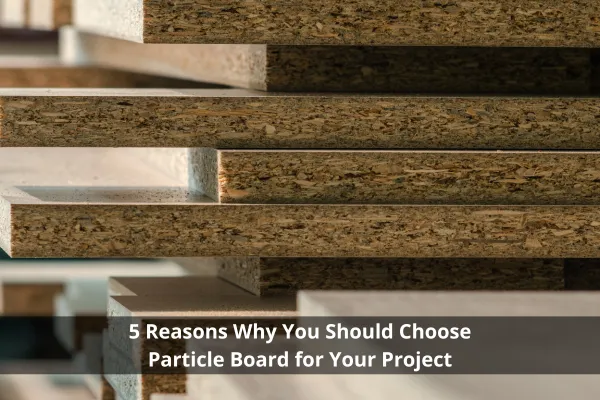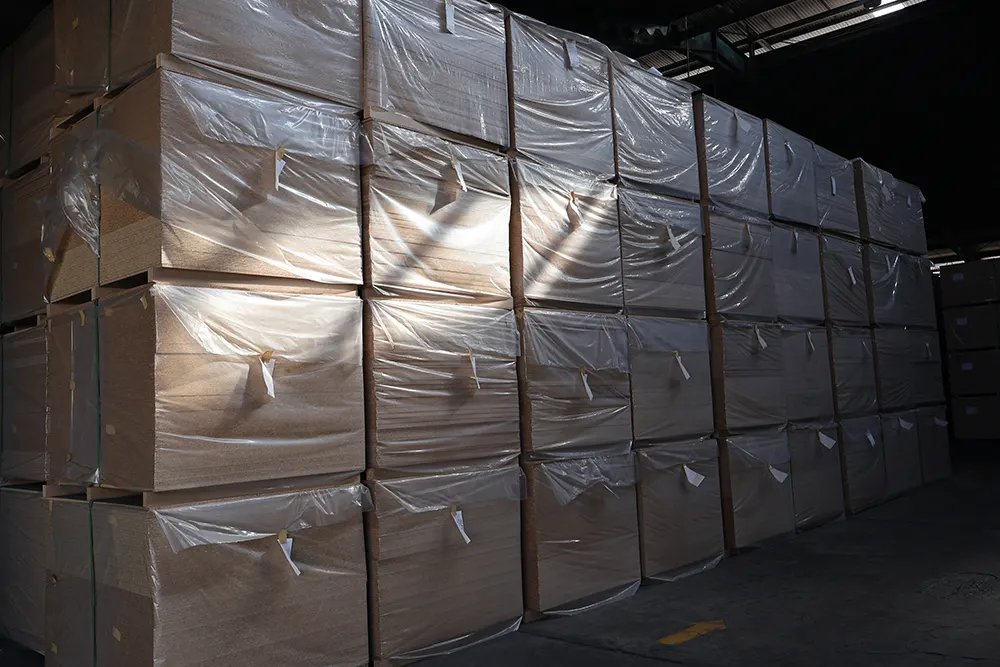
Introduction to Particle Board
Particle board is a versatile, engineered wood product made from wood chips, sawdust, and other wood residues that are bonded together with a strong adhesive under high pressure and heat. This process results in a dense, uniform, and sturdy board that is widely used in various applications, particularly in the construction and furniture industries. One of the key benefits of particle board is its cost-effectiveness, as it offers an affordable alternative to solid wood while still providing durability and ease of use for a wide range of projects. Additionally, its smooth surface is ideal for lamination or veneering, enhancing its aesthetic appeal.
Behind its rising popularity, particle board boasts multiple strengths, including its inherent durability and cost-effectiveness. Unlike traditional wood, particle boards are less prone to warping and consistent in their composition, making them a reliable choice for both indoor and outdoor projects.
Moreover, particle board is celebrated for its environmentally friendly attributes. By utilizing wood residues that would otherwise go to waste, it promotes sustainable manufacturing practices, aligning well with eco-conscious projects and reducing landfill waste.
The versatility of particle board is reflected in its broad range of uses. It is frequently chosen for cabinetry, shelving, and furniture manufacturing. Its uniform texture allows for easy cutting and shaping, facilitating the creation of custom designs and robust structures. Additionally, it’s often used in the construction of subfloors and underlayment, contributing significantly to the overall strength and stability of building projects.
Strength and Durability
Particle board boasts a solid reputation for its strength and durability. This engineered wood product is manufactured by compressing wood chips, sawdust, and resin under high pressure to form solid, robust panels. The meticulous production process ensures that particle board benefit remains incredibly strong and capable of withstanding substantial weight and wear over time.
A significant advantage of particle board lies in its ability to resist bending or breaking, even under heavy loads. This characteristic makes it an excellent choice for a wide range of applications, from furniture manufacturing to flooring and cabinetry. Unlike natural wood, which can have inconsistencies and weak spots, particle board presents a uniformly strong and durable material throughout.
The bonding of wood particles with resin creates a tightly packed structure that increases the panel’s resistance to everyday stress. Whether used in creating durable furniture pieces or robust shelving units, chipboard delivers consistent performance. Its engineered composition not only ensures strength but also provides resistance to splitting and warping, which are common issues in natural wood products.
Such durability is especially beneficial in environments where furniture and fixtures are subjected to frequent use and potential abuse. Bedrooms, living rooms, offices, and even industrial settings can benefit from the reliability that particle board panels offer. The blend of materials is designed to weather the rigors of daily life without compromising structural integrity.
Environmental Friendliness
Particle board is gaining popularity as an environmentally friendly material, primarily due to its composition. It is manufactured from recycled wood products, including sawdust, wood chips, and other wood residues that would otherwise be discarded. This recycling process considerably reduces wood waste, promoting efficient utilization of natural resources and aligning with the principles of sustainable development.
The production of particle board not only minimizes waste but also lessens the demand for raw lumber. This practice helps conserve forests and reduces the environmental impact associated with deforestation. By choosing materials like particle board, manufacturers and builders can significantly contribute to green building practices. These efforts support broader goals of environmental stewardship and sustainable resource management.
Using eco-friendly materials such as particle board benefit in construction and manufacturing projects. For one, it reduces the carbon footprint of the project, as the production process of chipboard emits less carbon dioxide compared to traditional solid wood production. Additionally, particle board’s ability to utilize 100% of the wood material ensures that even the smallest wood particles are used efficiently, leading to a more sustainable production cycle.
Incorporating environmentally friendly materials into your projects also aligns with growing consumer demands for green and sustainable products. This can enhance the marketability of the final product, appealing to environmentally conscious customers and potentially offering economic advantages through energy savings and sustainability incentives.
Cost-Effectiveness
When considering materials for your next project, it is paramount to evaluate the cost-effectiveness of each option. Particle board stands out for its affordable price compared to alternatives like solid wood or plywood. This affordability stems from its unique manufacturing process, which utilizes wood chips and sawdust bound together by resin. This not only minimizes waste but also significantly reduces manufacturing costs.
Solid wood is expensive due to the labor and time needed for processing. Plywood is cheaper but still costs more because of its multiple veneer layers. Particle board, however, is much more affordable, often costing a fraction of solid wood and less than plywood. For instance, a 4×8-foot sheet of particle board might cost around $25, while plywood could be $50 or more.
Choosing particle board is a financially sound decision, especially for budget-conscious projects. Whether you are renovating a large-scale commercial space or undertaking a small DIY project at home, the savings can be significant. Beyond just the initial cost, particle board’s affordability allows for more flexibility in budget allocation. This can mean investing in higher-quality finishes or additional features that may have been out of reach if more expensive materials were chosen.
Moreover, the cost-effectiveness of chipboard does not equate to a compromise in quality or performance. Modern manufacturing has improved its durability and look, making it ideal for cabinetry, furniture, and flooring. Its affordability and performance make chipboard a great choice for achieving attractive, durable results on a budget.
Particle Board Benefit: Versatility in Applications
Particle board stands out for its remarkable versatility, making it an ideal material for a wide range of applications in the world of construction and design. One of the most prominent uses of particle board is in furniture making. Its easy machinability allows for personalized and intricate designs, providing endless customization possibilities. Whether you’re looking to create compact, modular furniture or more elaborate decorative pieces, particle board can be tailored to suit your project’s specific needs.
In cabinetry, particle board is often favored for its cost-effectiveness and practicality. Its uniform surface is perfect for applying various finishes, from paint to laminates and veneers. This ability to seamlessly integrate different finishes enhances the aesthetic appeal of cabinets, making them suitable for both modern and traditional styles. Additionally, particle board’s stability ensures that cabinets maintain their integrity over time, even under frequent usage.
Flooring applications also benefit from the adaptability of particle board. Its robust structure can serve as a reliable subfloor, providing a stable foundation for various top-layer materials such as laminates, hardwood, or tile. The consistency of chipboard ensures a smooth, level surface, which is crucial for the installation of flooring materials.
Beyond furniture and cabinetry, people widely use particle board in other construction projects. They can cut it into different shapes and sizes, allowing for creative architectural designs and innovative building solutions. From wall paneling to shelving and beyond, particle board’s versatility supports a myriad of construction needs.
Conclusion
Particle board stands out as a compelling choice for a variety of projects due to its impressive attributes. Firstly, its inherent strength and durability make it a reliable material for constructing furniture, cabinetry, and other household essentials. This engineered wood product is crafted to endure substantial wear and tear, providing lasting value.
Affordability is another key advantage of particle board. Compared to solid wood and other engineered wood products, chipboard offers a cost-effective solution without compromising on quality. Its economical nature makes it accessible to a broader audience, from DIY enthusiasts to professional contractors.
Additionally, the versatility of chipboard is noteworthy. You can easily customize it by cutting, shaping, or finishing to meet the precise needs of any project. Its adaptability supports both aesthetic and functional requirements, making it suitable for a wide range of applications.
Considering these compelling reasons – strength, durability, environmental responsibility, cost-effectiveness, and versatility – particle board emerges as an excellent material choice for various projects. We encourage you to explore the potential of particle board for your next endeavor. To learn more or to view a diverse array of chipboard options, visit our comprehensive guide or contact our specialists for tailored advice. Embrace the advantages of chipboard and elevate your project’s success.

